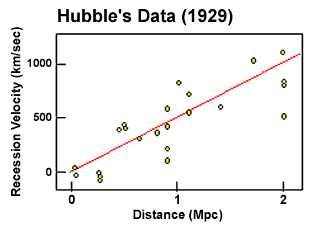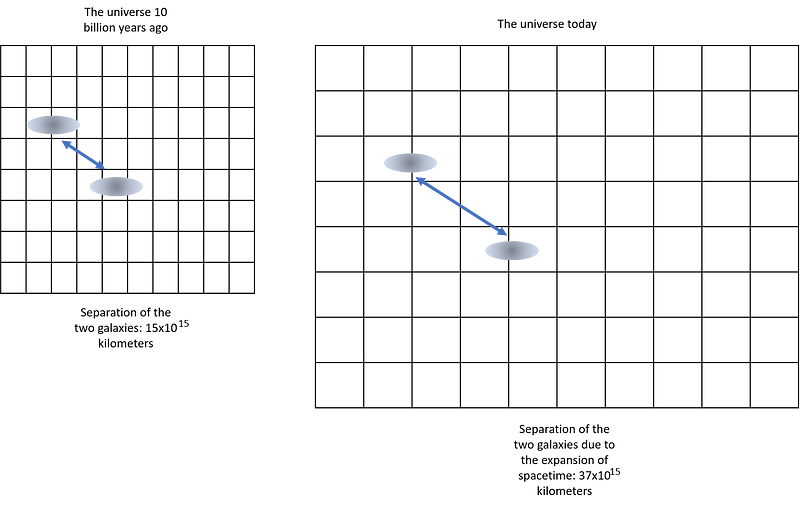Understanding Cosmological Redshift: A Misconception Unveiled
Written on
Chapter 1: The Shifting Perspective of the Universe
In the early twentieth century, our understanding of the cosmos underwent a significant transformation. Before this era, the prevailing belief was that our galaxy constituted the entirety of the universe, which was thought to be eternal and unchanging. This perspective lacked substantial evidence; however, it was widely accepted due to the absence of alternative theories. Thus, humanity perceived itself as existing within a relatively simple and predictable universe.
Even Albert Einstein, who formulated the equations of General Relativity in 1915—indicating that the universe must be dynamic rather than static—held onto the conventional viewpoint. He notably criticized Georges Lemaître when Lemaître proposed that the universe originated from an infinitely dense point and has since expanded.
Scientific progress often hinges on empirical evidence that challenges established theories. While Einstein dismissed Lemaître’s ideas, Edwin Hubble was making groundbreaking observations that would eventually lead to a paradigm shift in physics and cosmology.
As early as 1912, astronomer Vesto Slipher observed that light from remote celestial bodies appeared redder than anticipated. This phenomenon, known as redshift, was later understood to signify that these stars were moving away from us. Hubble utilized this information to make his remarkable discoveries during the 1920s.

Chapter 2: The Doppler Effect and Light
To comprehend Hubble's findings, we must consider how our senses interpret sound. When a sound approaches us, it seems to have a higher pitch than when it is receding. This change in frequency is a result of the compression and expansion of soundwaves, a concept known as the Doppler effect, named after Austrian physicist Christian Doppler, who described it in 1842.
We are familiar with the Doppler effect in everyday life. However, it’s essential to remember that when we move alongside the sound source, we perceive no change in pitch. This constancy is crucial for understanding cosmological redshift, which we will explore further.
We inhabit an expanding universe where, on average, every observable point moves away from us. This expansion does not indicate that we occupy a unique position at the center; rather, it highlights the universe's overall growth. All other points in the universe are receding at a relatively uniform speed, with minor local variations due to gravitational forces.
As we observe light from distant stars, we witness the evidence of this universal expansion. The light appears redder than it would in a static universe, with greater redshift corresponding to increased distance. Hubble utilized this redshift phenomenon to conclude that we reside in an expanding universe, leading to an early estimate of its expansion rate.

Section 2.1: The Nature of Cosmic Expansion
Despite ongoing debates about the precise rate of expansion, scientists generally agree that the universe is increasing in size at approximately 70 kilometers per second per 31 million kilometers of distance. This rate accumulates over the vast distances we observe in the cosmos.
However, challenges arise when we consider the misconception that redshift results from the stretching of light as it travels through expanding spacetime. Common analogies, such as the expanding cake filled with raisins, illustrate this idea but can lead to misunderstandings.

Chapter 3: Clarifying the Misconception
The erroneous explanation of redshift suggests that light waves are stretched as they traverse an expanding universe. This view is misleading. Einstein recognized that acceleration and gravity are indistinguishable over small distances where tidal forces are minimal.
In a constantly accelerating spaceship, observers inside would perceive slight redshift when light travels from one end to the other, not because the space expanded, but due to their relative motion. Conversely, a co-moving observer traveling with the light beam would not detect any redshift.
This scenario mirrors the experience of someone on a moving train: while stationary observers outside notice a change in pitch, those inside hear no difference. Therefore, cosmological redshift arises from our movement away from the light-emitting source rather than a stretching of lightwaves due to spacetime expansion.
In essence, light itself remains unchanged; the phenomenon we observe is a result of our relative motion in relation to the source of the light.
The first video titled "Cosmological Redshift (Older Version) - YouTube" provides a detailed exploration of the concept of redshift and its implications for our understanding of the universe.
The second video, "Classroom Aid - Cosmological Redshift - YouTube," serves as an educational resource that clearly explains the nature of redshift, making it accessible to a broader audience.
In conclusion, the next time you hear someone explain redshift as a result of light being stretched by expanding spacetime, remember that our understanding hinges on the relative motion between us and the light-emitting object. Misunderstandings can proliferate easily, but grasping the correct concepts is vital for advancing our knowledge of the universe.